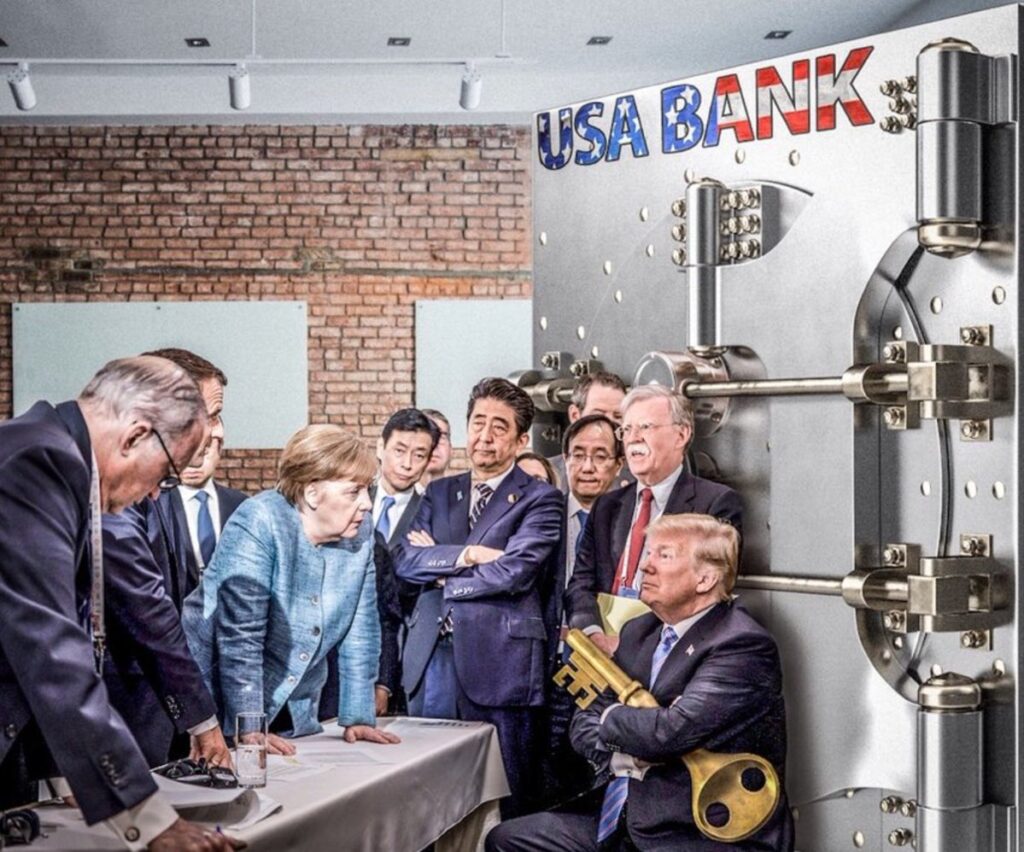President Trump Announces 30 Percent Baseline Tariff for European Union and Mexico
President Trump announced on Truth Social a baseline tariff rate of 30% for both the European Union and Mexico. Other sector specific tariffs still apply.
 The EU rate is interesting in that the 30% rate is lower than the Canadian rate of 35%, yet the EU rate exceeds the current ‘chicken tax’ rate historically applied to imported SUVs and Trucks. Strategically, the 30% tariff rate on Europe is a major incentive for various EU sectors to shift manufacturing into the USA.
The EU rate is interesting in that the 30% rate is lower than the Canadian rate of 35%, yet the EU rate exceeds the current ‘chicken tax’ rate historically applied to imported SUVs and Trucks. Strategically, the 30% tariff rate on Europe is a major incentive for various EU sectors to shift manufacturing into the USA.
Without a formal declaration of the end of the Marshall Plan, the reciprocity rate of 30% for all EU imports also equalizes the transatlantic trade benefit. It will be interesting to see how the EU responds, given any retaliation could be added to the existing baseline.
Canada is currently trying to organize a trade agreement with the EU, in the hopes of positioning themselves toward the transatlantic group as they were toward the transpacific group (vis-a-vis China).
The Canadian economic model, to position themselves as a gateway into the USA for Chinese component goods, previously served them well as they exploited a NAFTA loophole. However, the new 35% rate impedes their ability to remain an assembly driven manufacturing model. Similarly, the 30% USA rate toward the EU impedes the Canadian transatlantic approach.
The USA Gross Domestic Product (GDP) is currently 26 to 28 percent of the entire world’s GDP. The USA is by far the most dominant consumer market in the world. President Trump is leveraging access to the U.S. market within the global trade imbalance reset.
Additionally, Mexico also receives the 30% tariff rate applied. Again, interestingly the Mexico rate is lower than the Canadian rate and reflects two distinctly different levels of economic importance. Almost all of Mexico’s manufacturing base exists exclusively due to access to the USA market.
Hundreds of billions worth of investment dollars from both the EU and China have poured into Mexico for the single purpose of generating tariff-free goods for sale into the USA.
Neither Mexico nor Canada can respond to the tariffs as applied against the backdrop of their dependency on the USA market. Both can try to sell their goods and resources to alternate nations, but the costs associated with the transfer of those goods to alternate countries negates the profit incentive to just streamline the internal process and offset the tariffs.
The big question for the EU and Mexico is one we see playing out in Japan, downward wage pressure.
The more a nation tries to offset the tariffs in order to maintain the industry, the less profit margin they have within their operation for wage rates to increase. This is what the USA went through for four decades as the rustbelt took shape and all the manufacturing jobs were offshored.
The Japanese auto sector is now worried about declining wages, the same basic thing will roll forward into China, Mexico the EU, and to a lesser extent Canada. Eventually tariff subsidies run into the natural bottom line of the production sector.
The EU is in the worst possible shape to deal with this wage and labor pressure. Their collective demand toward green energy is extremely expensive and their manufacturing sectors are now facing serious increases in production cost due to the high cost of energy.
The scale of that EU energy problem when combined with the generous worker benefits within the EU creates a reality where they simply cannot take any more upward pressure on production costs, without opening themselves up to cheap Chinese goods.
The EU has massive self-imposed inflation as a result of energy policy. As China maintains state subsidized production, those Chinese goods eventually get dumped into markets like the EU where the domestic suppliers simply cannot compete on price. European Commission President Ursula von der Leyen has been very vocal about this problem for almost a year.
President Trump is leveraging all of these global dynamics in our favor. Cheap U.S. energy, cheap and abundant U.S. raw materials, reasonable open-market labor rates (deportation process assisting), in combination with the world’s #1 consumer base, makes the best bet for manufacturing to come to the USA.
All of that domestic USA economic activity drives expansion of the GDP, which pushes more money into the federal budget and offsets the cost of govt spending. Add to that GDP growth the income from tariffs, and suddenly we start running a surplus to drive down debt and deficits.
Despite all the seemingly noisy distractions on other matters, on the economic front President Trump’s entire MAGAnomic policy agenda is exceptionally well structured and delivering great results.







Post a Comment